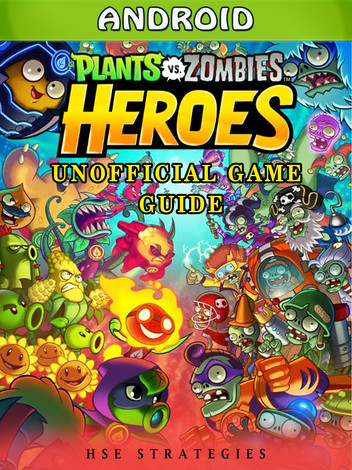
The Ultimate Guide to the Android Ecosystem: Navigating News, Phones, and Gadgets
The Android Universe: A Comprehensive Guide for 2024 and Beyond
The world of Android is a vast, dynamic, and constantly evolving ecosystem. It’s more than just an operating system; it’s a sprawling digital universe encompassing breaking news, a dizzying array of smartphones, and an ever-expanding galaxy of interconnected gadgets. For newcomers, this landscape can feel overwhelming, while even seasoned enthusiasts can find it challenging to keep pace with the relentless cycle of innovation. From the latest software updates and hardware leaks that dominate Android news cycles to the nuanced decisions involved in selecting the perfect device, understanding this ecosystem is key to unlocking its full potential.
This guide is designed to be your definitive map. We will navigate the three core pillars of the modern Android experience: the critical importance of staying informed through reliable news, the deep-dive analysis required to choose the right Android phones, and the exciting potential of expanding your world with a suite of complementary Android gadgets. Whether you’re considering your next upgrade, looking to build a seamless multi-device setup, or simply want to understand the forces shaping the future of mobile technology, this article will provide the in-depth analysis, practical examples, and actionable insights you need to make informed decisions and truly master your digital life.
Section 1: The Pulse of the Ecosystem: Why Following Android News Matters
In the fast-paced world of mobile technology, staying stationary means falling behind. Following Android news isn’t just a hobby for tech enthusiasts; it’s a critical practice for any user who wants to maximize their device’s security, functionality, and longevity. The news cycle provides a roadmap of what’s to come, helping you anticipate changes, plan future purchases, and protect your digital well-being. Ignoring it is like driving without a GPS—you might get where you’re going, but you’ll miss all the shortcuts, warnings, and scenic routes along the way.
The Different Flavors of Android News
Not all news is created equal. Understanding the different categories helps you filter the noise and focus on what’s most relevant to you:
- Major OS Updates & Security Patches: This is arguably the most crucial category. Announcements about new Android versions (e.g., the developer previews and betas for Android 15) reveal the future direction of the entire platform, introducing new UI paradigms, privacy controls, and foundational technologies. Equally important are the monthly security patches. News about these updates alerts you to critical vulnerabilities that have been fixed, underscoring the importance of installing them promptly. A real-world example is Google’s “Pixel Feature Drops,” quarterly updates that bring new, exclusive features to Pixel devices, news of which often precedes the rollout and builds excitement.
- Hardware Leaks, Rumors, and Launches: This is the lifeblood of the enthusiast community. The cycle typically begins with supply chain rumors, progresses to CAD-based renders, and culminates in official launch events. Following this cycle for devices like the Samsung Galaxy S series or Google’s next Pixel phone allows you to see how new technologies (like brighter displays, faster processors, or novel camera sensors) are being implemented. This information is invaluable for planning your next upgrade, allowing you to weigh the features of an upcoming device against current models.
- Ecosystem and App Developments: The Android experience extends far beyond the phone’s OS. News in this category covers significant updates to core Google apps (like Google Messages adopting new RCS features), platform shifts (like the evolution of Wear OS for smartwatches), and strategic partnerships (like Samsung and Google collaborating on foldable software). This news signals how the interconnectedness of Android gadgets is improving, which can influence your decision to invest in a watch, tablet, or earbuds from a particular brand.
Best Practices for Staying Informed
-Reviewer-Photo-SOURCE-Julian-Chokkattu-(no-border).jpg)
To effectively follow Android news, it’s essential to cultivate good habits. First, curate your sources. Rely on a handful of reputable technology publications known for their fact-checking and in-depth analysis rather than rumor mills. Second, understand the hype cycle. A “rumor” is unverified information, a “leak” is often from a more credible source but still unofficial, and only an “official announcement” is a certainty. Avoid making purchasing decisions based solely on early rumors. Finally, use tools like Google Alerts or RSS feeds to track specific topics, such as “Pixel 9 Pro camera” or “Android 15 privacy features,” to get targeted information delivered directly to you.
Section 2: The Core Experience: A Deep Dive into Modern Android Phones
The smartphone is the heart of the Android ecosystem. With countless models from dozens of manufacturers, choosing the right one can be a daunting task. The key to making a wise decision is to look beyond the superficial numbers on a spec sheet and understand the underlying technologies and philosophies that differentiate the vast market of Android phones. A phone with a 200MP camera isn’t automatically better than one with a 12MP sensor, and the fastest processor on paper might not deliver the best real-world experience for your needs.
Beyond the Spec Sheet: What Really Matters in 2024
Modern smartphones are complex systems where hardware and software are deeply intertwined. Here’s what to focus on:
- The SoC (System on a Chip), Not Just the CPU: The SoC is the brain of the phone, and it’s much more than just a processor. It contains the GPU (for graphics), the ISP (Image Signal Processor, for camera performance), and the NPU (Neural Processing Unit, for AI tasks). For example, Google’s Tensor G3 chip in the Pixel 8 Pro may not win raw performance benchmarks against Qualcomm’s Snapdragon 8 Gen 3, but its NPU is specifically designed to excel at on-device AI and machine learning tasks that power features like Magic Eraser and Live Translate. Conversely, a Snapdragon-powered device might be a better choice for a hardcore mobile gamer who prioritizes raw graphical horsepower.
- Computational Photography and Camera Systems: Megapixels are only a small part of the story. Sensor size (which determines how much light is captured), aperture (f-stop), and lens quality are far more important. However, the biggest differentiator today is software. This is where computational photography comes in.
Case Study: Google Pixel vs. Samsung Galaxy. The Google Pixel line has long been praised for its camera prowess, often achieved with modest hardware. Its strength lies in software processing, using techniques like HDR+ to merge multiple exposures for a perfectly balanced shot and Super Res Zoom to deliver usable digitally zoomed photos. Samsung, on the other hand, often pairs its excellent software with more powerful hardware, like the massive 200MP sensor and 10x optical periscope zoom lens on the Galaxy S24 Ultra, providing unmatched versatility. Your choice depends on whether you prefer point-and-shoot simplicity with amazing results (Pixel) or a versatile toolkit for creative control (Samsung). - Software Experience and Update Policy: This is a critical, long-term consideration. The version of Android a manufacturer uses—its “skin”—dramatically affects the daily user experience. Google’s Pixel phones offer a clean, “stock” Android experience. Samsung’s One UI is feature-rich, offering extensive customization and unique tools like DeX. OnePlus’s OxygenOS is known for its speed and smooth performance. Beyond the interface, the manufacturer’s update promise is paramount. Google and Samsung now lead the industry by offering an incredible seven years of OS and security updates for their flagship devices. This guarantees your expensive investment will remain secure and receive new features for nearly a decade, a massive value proposition that many cheaper brands can’t match.
Section 3: Expanding the Universe: The Ever-Growing World of Android Gadgets
A powerful Android phone is a fantastic tool, but its true potential is unlocked when it becomes the central hub of a connected ecosystem. The world of Android gadgets—from smartwatches and earbuds to tablets and trackers—is designed to extend your phone’s capabilities, making information more accessible, media more immersive, and daily tasks more convenient. Building this ecosystem thoughtfully can create a seamless experience where your devices work in harmony.
The Seamless Ecosystem: More Than Just a Phone
Interconnectivity is the key. Features like Google Fast Pair, which allows for one-tap Bluetooth pairing, and Nearby Share, for easy file transfers, are the glue that holds the modern Android ecosystem together. Here’s how different gadgets fit in:

- Wearables (Smartwatches & Fitness Trackers): The revitalization of Wear OS, through a collaboration between Google and Samsung, has made Android smartwatches more compelling than ever. A device like the Samsung Galaxy Watch 6 can track dozens of health metrics, handle mobile payments, and display notifications, all while integrating deeply with a Samsung phone’s Health app. The Google Pixel Watch 2, meanwhile, offers the best of Fitbit’s fitness tracking combined with a pure Wear OS experience that feels like a natural extension of a Pixel phone. The choice often comes down to which ecosystem you’re already invested in.
- Audio (True Wireless Earbuds): Modern earbuds are sophisticated Android gadgets. The Google Pixel Buds Pro, for example, offer more than just great sound. They feature multipoint connectivity, allowing them to be simultaneously connected to your Android tablet and phone, seamlessly switching audio when a call comes in. They also integrate with Google Assistant for hands-free controls and can even perform real-time translation, turning your phone and earbuds into a personal interpreter. This level of software integration is a powerful reason to stay within a single brand’s ecosystem.
- Tablets and Foldables: For years, Android tablets lagged behind the competition. However, starting with Android 12L, Google has made significant strides in optimizing the OS for larger screens. Features like the taskbar for easy app switching and improved split-screen multitasking make devices like the Samsung Galaxy Tab S9 a productivity powerhouse. Foldables represent the cutting edge of this trend.
Real-World Scenario: A professional using a Samsung Galaxy Z Fold 5 can unfold the device into a mini-tablet. On the large inner screen, they can have a video conference running on the top half while taking notes with the S Pen on the bottom half. When the meeting is over, they can fold the device shut and use it as a normal, one-handed phone. This demonstrates how new form factors are creating entirely new workflows.
Common Pitfalls: Avoiding Compatibility Headaches
While brand-specific ecosystems offer seamlessness, they can also lead to “lock-in.” A common pitfall is buying a gadget that relies heavily on proprietary features. For instance, some of the advanced health features on a Samsung watch may only work when paired with a Samsung phone. To mitigate this, look for Android gadgets that support open standards. Choosing earbuds with the new Bluetooth LE Audio standard or a charger with Qi2 wireless charging ensures they will work well with a wide range of devices, not just one brand, giving you more flexibility in the future.
Section 4: Making an Informed Choice: Recommendations and Future Outlook
With a clear understanding of the news, phones, and gadgets, the final step is to synthesize this information to fit your specific needs. The beauty of the Android ecosystem is its diversity; there is no single “best” setup, only the best setup for you. By identifying your user profile, you can build a collection of devices that enhances your life without overspending on features you’ll never use.
Defining Your User Profile

Consider which of these profiles best describes you:
- The Power User / Mobile Creator: You demand the absolute best in performance, photography, and productivity. Your ideal setup would be a top-tier flagship like the Samsung Galaxy S24 Ultra or Google Pixel 8 Pro. You’d pair this with a high-performance tablet like the Galaxy Tab S9 Ultra for media editing and a premium smartwatch like the Galaxy Watch 6 Classic for its robust health tracking and classic design. This user prioritizes cutting-edge features and is willing to invest in them.
- The Value-Driven Pragmatist: You want a high-quality experience without the flagship price tag. The mid-range is your sweet spot. An excellent choice would be a “value flagship” like the Google Pixel 8a, which offers a flagship-grade camera and software experience at a fraction of the cost. This could be paired with a versatile smartwatch like the Fitbit Versa 4 and reliable, mid-range earbuds that offer key features like ANC and good battery life. This user prioritizes a high return on investment.
- The Ecosystem Loyalist: You value seamless integration above all else. If you love the Google experience, your perfect setup is a Pixel phone, a Pixel Watch 2, and Pixel Buds Pro. Every device is designed to work perfectly with the others, creating a cohesive and intelligent system where context and data are shared effortlessly between them. This user prioritizes convenience and software harmony.
What’s Next for Android?
The future of the Android ecosystem is being shaped by several key trends, frequently highlighted in Android news. On-device Artificial Intelligence will become even more central, moving beyond photo editing to proactive assistance and more natural user interfaces. Advancements in foldable technology will make the devices more durable and affordable. We will also see the rise of new form factors, with smart rings gaining traction for health tracking and AR glasses slowly moving from concept to consumer reality. Staying informed about these trends will ensure your next purchase is not just great for today, but ready for tomorrow.
Conclusion: Your Journey in the Android Universe
Navigating the Android ecosystem is a journey of continuous discovery. We’ve explored the three essential pillars: the necessity of following Android news to stay ahead of the curve, the critical thinking required to select from a diverse market of Android phones by looking beyond the spec sheet, and the immense potential of expanding your capabilities with a curated set of Android gadgets. The key takeaway is that the power of Android lies in its unparalleled choice. It empowers you to build a technological toolkit that is uniquely yours.
By understanding your own needs, staying informed about the latest developments, and appreciating the deep interplay between software and hardware, you can move from being a passive consumer to an empowered user. The Android universe is vast and full of possibilities; now you have the map to explore it with confidence.



